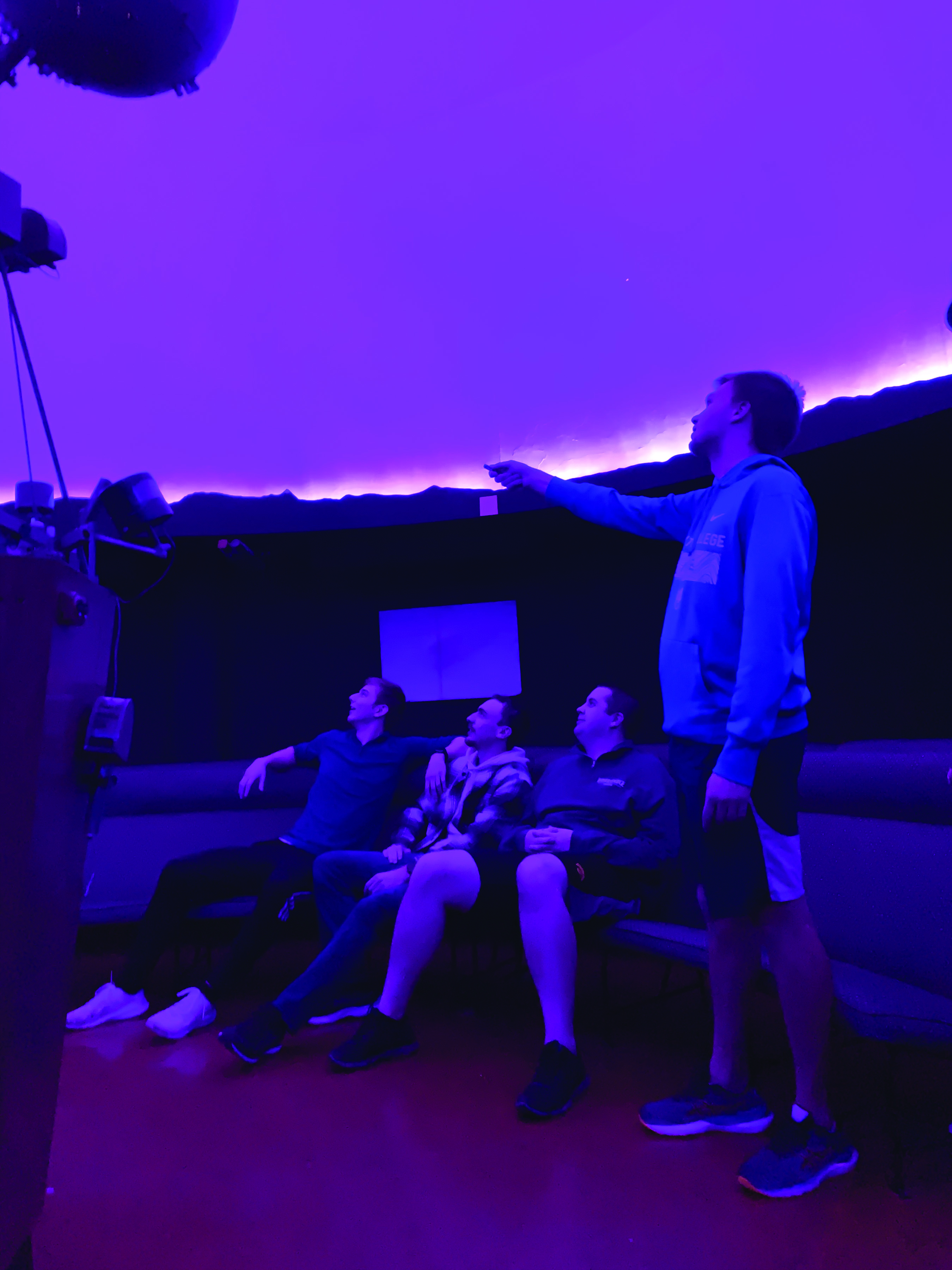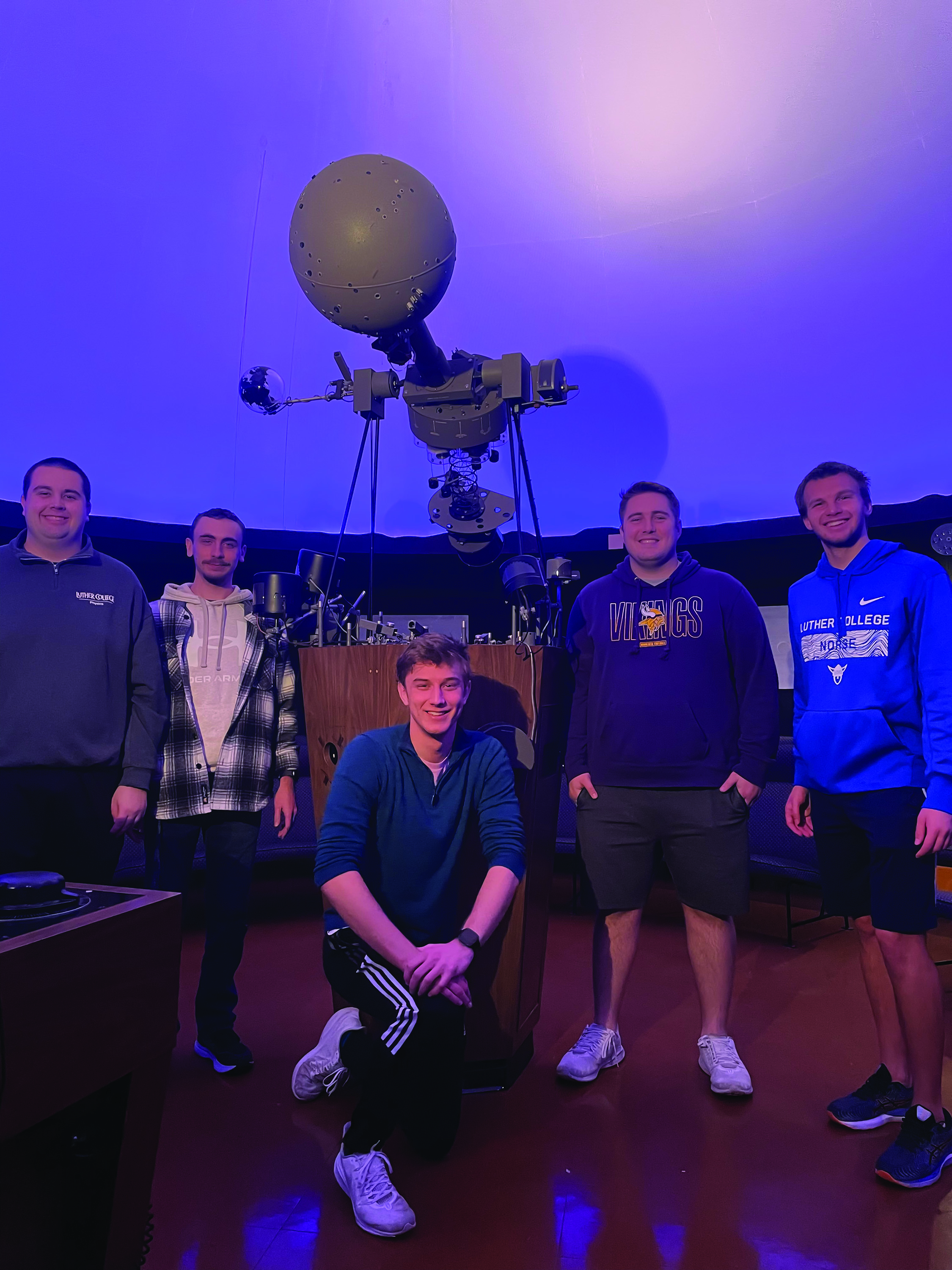The SPS Planetarium Takeover
Winter
2023
SPS Chapters on Outreach
The SPS Planetarium Takeover
Darren Kremer, SPS Chapter President, Dalton Ludington, Past SPS Chapter President (2021–22), and Will Ode, SPS Chapter Vice President, Luther College
Last spring our SPS chapter took control of Luther College’s more than 60-year-old planetarium.
In the past the facility was run by a student in a work-study position and had a very limited schedule. Use had already been diminishing before 2020, and many students didn’t know it existed. With pandemic complications added in, the room became primarily a place for campus clubs to watch movies. Its original purpose was being forgotten.
Planetariums come in different forms and sizes, but all are illuminated with a sense of beauty and magic. They are domed rooms that project stars and other astronomical objects onto the ceiling. During a show, a host takes visitors through the night sky or another astronomical exploration. People often say how relaxing it is to watch the stars circle above, and the experience brings them to a point of intellectual curiosity as well.
The pandemic affected our SPS chapter in many ways, but primarily by decreasing opportunities for community outreach―a primary goal of ours. While discussing new ways to interact with the community and expose students to STEM fields, Luther faculty member and astrophysicist Dr. Jeffrey Wilkerson suggested that we use the planetarium, which was built in 1964 and can seat approximately 70 people. We were delighted by the opportunity.
Dr. Wilkerson has since trained 12 of us to run the planetarium and present shows. It was an absolute joy and awe inspiring for us to learn how to operate the equipment, identify stars, present shows, and connect with members of our community. And we got to learn some astrophysics along the way.
In the spring of 2022, we presented five shows over the planetarium’s three to four weeks of availability and reached more than 80 people. This fall we established a formal way for on-campus groups, clubs, and teams to register for shows. We’ve also hosted two community groups, including a Girl Scout troop from southern Iowa, and two open house nights where any and all could attend.
We’ve had a blast with this project and are really enjoying the planetarium. We’re also having fun sharing this resource and our knowledge with younger students and the larger community. Interacting with youth and introducing them to physics and other sciences has been beyond rewarding. Our SPS chapter is pleased to have restored the planetarium to its proper use, and we hope to continue providing this service to the community for a long time to come.
Publish Your Undergraduate Work
The Journal of Undergraduate Reports in Physics (JURP) is a peer-reviewed publication of the Society of Physics Students that consists of papers by undergraduate physics and astronomy researchers. In addition to more traditional research topics in physics, astronomy, and related fields, papers may discuss the development of an outreach demonstration or tool. A print version of JURP is published every summer and sent to all SPS members. Manuscripts are accepted on a rolling basis but must be submitted by March 15 for print consideration. Learn more at spsnational.org/jurp.


